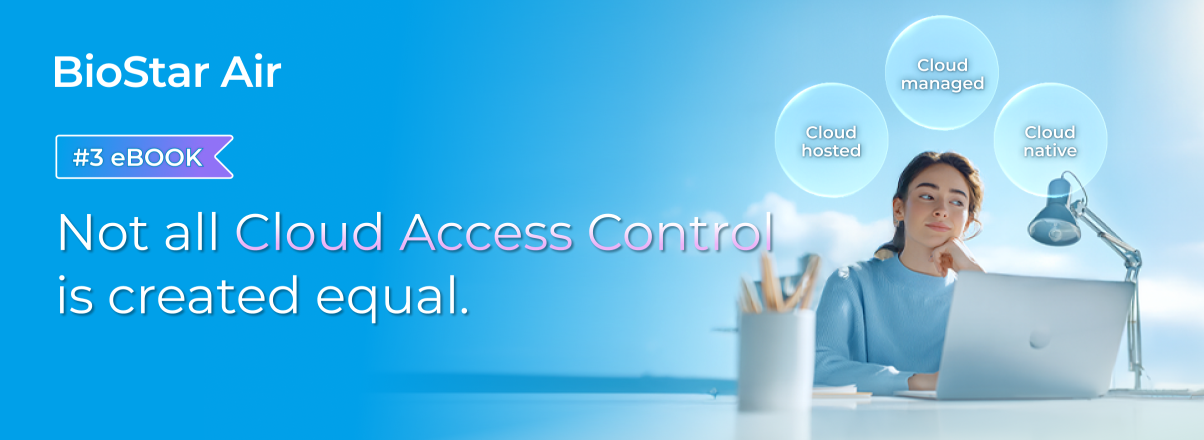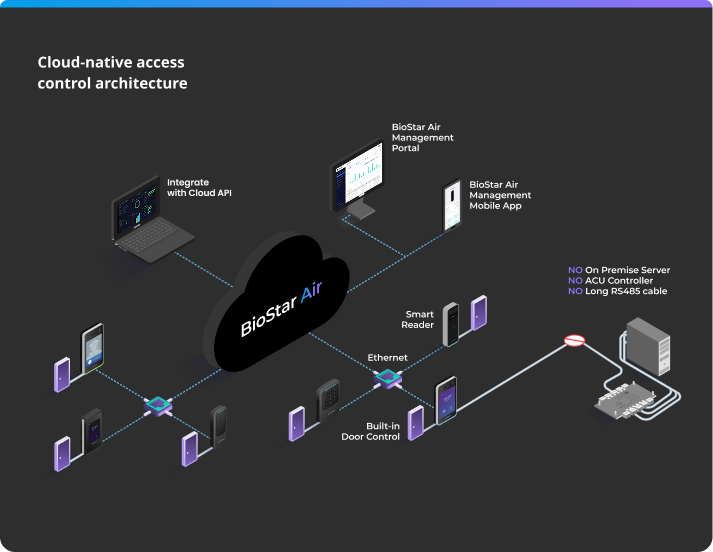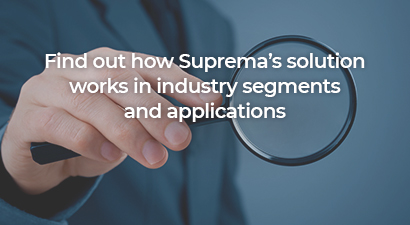- PRODUCTS
- Security Platform
- BioStar X | On-Prem SecurityNEW
- BioStar Air | Cloud Security
- BioStar 2
- Access Control
- Access Control Unit
- Biometric Readers
- RFID Readers
- Mobile Credential
- Peripherals
- Wireless Door Locks
- SOLUTIONS
- SUPPORT
- ABOUT
- device_hubHUB
- Blogs & Articles

Not all cloud access control is created equal. Learn the difference between cloud-managed, cloud-hosted, and true cloud-native systems.
After last week’s article, this is the third article in our cloud access control series, adapted from our latest eBook. If you want to dive deeper into the future of access technology, credential flexibility, and platform comparisons—download our full guide.
Cloud access control can mean a lot of different things, and not all of them deliver the same convenience. Some platforms keep the old infrastructure and simply add a web dashboard. Others go further, hosting user data and access rules in the cloud but still relying on legacy hardware. And a select few are purpose-built for the cloud era, designed from the ground up for agility, scalability, and simplicity.
Understanding the types of cloud access control systems.
To help you make informed decisions, let’s break down the three primary types of cloud access control systems commonly found in today’s market.
Level 1: Cloud-managed access control (on-prem in disguise).
This approach is essentially traditional access control with a cloud gateway tacked on.
• The system runs on a dedicated server emulating traditional on-premise software, just hosted off-site.
• Each site requires manual setup and configuration.
• Core authentication logic and data remain isolated per customer, limiting real-time sync and cloud-native agility.
This setup adds complexity, installation cost, and limits scalability and you’re still managing infrastructure across locations.
Level 2: Cloud-hosted access control (traditional ACaaS).
This model is commonly marketed as “Access Control as a Service” (ACaaS). It introduces cloud-based credential management and user access configuration.
Readers connect to a cloud-hosted platform to verify user identities.
• However, local door controllers (ACUs) are often still required, these devices relay commands from the cloud to the doors.
• Adding a new door usually means buying and configuring another controller, introducing cost and complexity.
While it supports centralized management, the system still relies on partial local infrastructure, limiting the benefits of true cloud agility.
Level 3: Cloud-native access control (e.g., BioStar Air).
Cloud-native platforms aren’t retrofitted versions of old systems, they’re purpose-built for modern connectivity, multi-site scalability, and mobile-first operations. Instead of relying on local servers or intermediate controllers, these solutions leverage edge architecture and smart devices that operate independently, sync instantly, and scale effortlessly.
BioStar Air is a leading example of this new generation.
Unlike most cloud systems that require door controllers or third-party biometric workarounds, BioStar Air connects Suprema’s smart readers directly to the cloud, via standard IP, without any local server or sync tool. Readers handle access logic independently and communicate with the cloud for real-time updates across all sites, regardless of network boundaries.
Here’s how it works in practice:
• No controllers. No server closets. Just install a Suprema reader, connect it to the network, and you’re online.
• Smart edge readers process access decisions locally, with built-in relays and processors.
• Multi-site management is seamless. One system governs access across offices, warehouses, retail locations, and remote facilities.
• Credential updates and logs sync instantly across locations, with no duplicated data or manual push/pull.

This architecture doesn’t just simplify setup, it changes how you think about scale. Organizations can start small, deploy quickly, and expand later without rewiring systems or re-enrolling users.
Biometrics: The ultimate Litmus test.
Want to know if a cloud platform is truly ready for modern access control? Look at how it handles biometrics.
Most cloud platforms:
• Integrate third-party readers via APIs or middleware.
• Maintain separate databases for biometric data.
• Require multiple photos or long scans for face enrollment.
• Deliver inconsistent results with outdated matching algorithms.
BioStar Air:
• Native biometric support (face & fingerprint).
• Single-look facial enrollment.
• Remote enrollment with just one selfie from your phone.
• Real-time cloud propagation to all readers.
• AI-driven matching accuracy and anti-spoofing at the edge.
For Erik Cornelius, Head of Product for BioStar Air at Suprema, this is where most cloud platforms fail, not because they don’t try, but because their foundations were never built for biometrics:
“Biometric enrollment speed is the ultimate litmus test. It’s where architecture and user experience collide. If enrollment takes 30 seconds, requires multiple photos, or doesn’t sync instantly across devices, you’re not looking at a real cloud-native platform. With BioStar Air, enrollment and propagation across reader takes less than five seconds. This means the biometric profile is instantly available on every connected reader in the world the moment you step away. No extra software. No secondary enrollment. That’s what we call a true “one-shot enrollment”, and it’s a night-and-day difference from what most vendors offer.”

The importance of a unified experience.
Access control should be simple, for both admins and users. But many “cloud” systems still rely on:
• Clunky desktop software or VPNs.
• Manual syncing of credentials.
• Separate portals for enrollment or reporting.
BioStar Air centralizes everything into one intuitive platform:
• Manage access, credentials, devices, and users from one web portal.
• Enroll and revoke users from a mobile app.
• Get real-time door status, video footage, and alerts anywhere.
Not all cloud platforms are created equal. True cloud-native access control delivers more than just remote access, it redefines how organizations secure, scale, and support their spaces.
Understanding the types of cloud access control is just the beginning. Not all platforms are built the same, and knowing what’s under the hood can help you avoid costly compromises. In the next article, we’ll explore actual use cases where cloud-native access control delivers outsized value, from coworking spaces and gyms to retail chains and distributed franchises. Stay tuned.
Want the full story right now? Download the complete BioStar Air eBook for expert insights, real-world use cases, and side-by-side platform comparisons.











